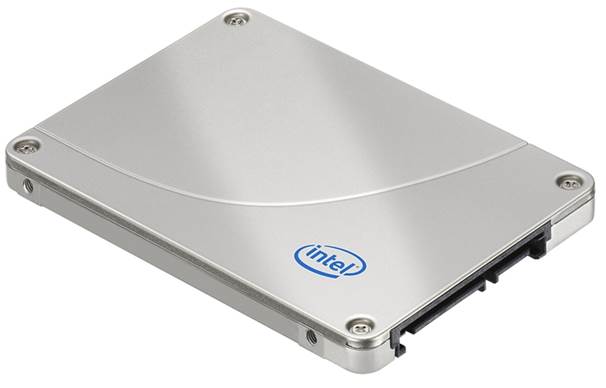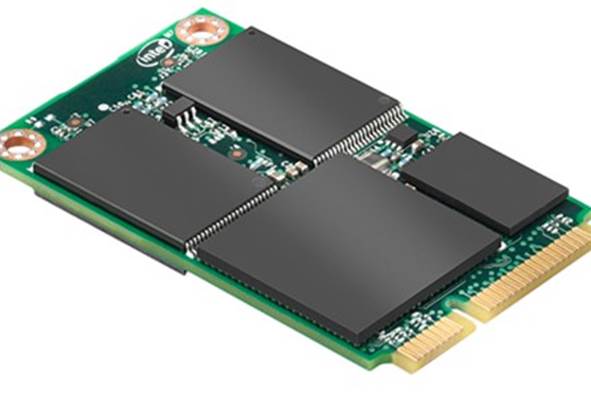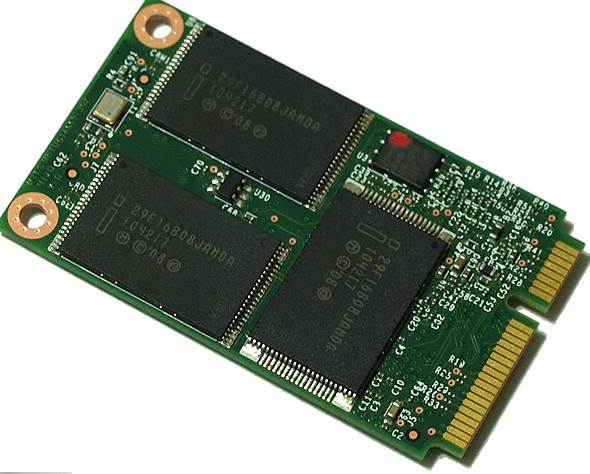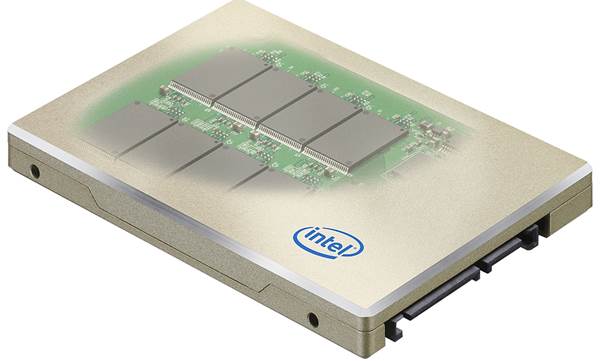You can argue that Seagate was the first
company to deliver a hybrid hard drive when it released the Momentus XT in
2010, but it was Intel that came up with the technology that allowed the home
user to combine a hard drive with an SSD cache drive.
The piece of technology that unified the
two pieces of hardware was the Z68 chipset, along with its SA TA controllers
and RAID software. This software is an evolution of the Intel Matrix Storage
Manager that we first saw in 2003 and which Intel has used to differentiate one
chipset from another, so you need, for instance, an ICH10R southbridge rather
than ICH10.

Intel
310 40GB
Matrix Storage Manager evolved into RST
(Rapid Storage Technology), but you need a clear view of Intel's approach to a
cache drive to understand how the system works. First you need a suitable
motherboard with an Intel chipset and SA TA controller that is set to RAID in
the BIOS/UEFI. There are various gotchas lying in wait such as the need to use
a Z68 chipset or the latest Ivy Bridge hardware and you also need to use a
suitable processor, as some of the basic Pentium models lock out RST. The cache
SSD must have a capacity lower than 64GB.
The next step is to install Intel Rapid
Storage Technology drivers v10.5 (or later) and then you're ready to add the
cache drive. After a restart, the Intel software magically gains an extra tab
that manages the Accelerate function, where you have two options. The first is
Enhanced mode, which uses the SSD as write-through cache so it speeds up the
system without risking any data loss. The second choice is Maximised mode,
which uses write-back cache and that requires the SSD to learn how you use your
PC and copy files over a period of time.

The
SSD we have here is a 40GB Intel 310, which uses an Intel controller and 34nm
flash, just like the second-generation X25-M SSD.
The SSD we have here is a 40GB Intel 310, which
uses an Intel controller and 34nm flash, just like the second-generation X25-M
SSD. Intel has updated its cache drive range so the 320 model uses 25nm flash,
the 330 switched to a SandForce controller and the 335 SSD uses 20nm flash with
the SandForce chip.
So why, you many wonder, are we looking at
the 310 drive? That's a good question that has two answers. The first part is
that Intel doesn't sell its cache drives in the retail channel but instead
sells them to OEM PC builders, so we had to use the 310 drive that we happened
to have. The second point is that we wanted to take a good look at the way that
the Intel software works as it applies to drives such as the Kingston mS100, as
well as Intel branded drives.
Frankly, it's a bit of a nightmare, but it's
a sophisticated nightmare.

We
had to go into the BIOS to enable RAID, which meant that the system entered an
endless series of reboots as the system was missing the necessary drivers.
Once the 310 drive was installed on our
Intel Z68 system we ran Intel's SSD Toolbox software, which monitors the SSD
(and other drives in your system) and also reports on their health and usage.
The Toolbox software also contains the latest firmware for each SSD in Intel's
range, so we used the software to update to the latest firmware.
After that, we installed the Intel RST
software and found that the desired Accelerate function was nowhere to be seen.
We had to go into the BIOS to enable RAID,
which meant that the system entered an endless series of reboots as the system
was missing the necessary drivers. These are the 'hit f6 to install' drivers
that you see during Windows setup.
One answer would be to reinstall Windows,
but we didn't fancy that. A bit of searching led us to a fix, which was to
re-enable AHCI in the BIOS, start Windows, perform a registry hack, restart the
PC and switch over to RAID in the BIOS and then, after a few restarts, the
system was ready for action.

The
310 SSD is a relatively old model and the performance isn't very impressive,
but that would doubtless be improved by using a current drive.
Actually enabling Accelerate was simple and
the system behaved itself immaculately.
The 310 SSD is a relatively old model and
the performance isn't very impressive, but that would doubtless be improved by
using a current drive. We take no issue with the hardware but found the
software was a pain.
We strongly suggest that you only use an
Intel cache drive in a new build PC and don't try to add an Intel cache drive
to an existing system unless it's already configured for RAID.
|
Details
·
Price: $128
·
Manufacturer: Intel
·
Website: www.intel.co.uk
·
Required spec: Windows 7
Ratings
·
Quality: 5
·
Value: 5
·
Overall: 5
|